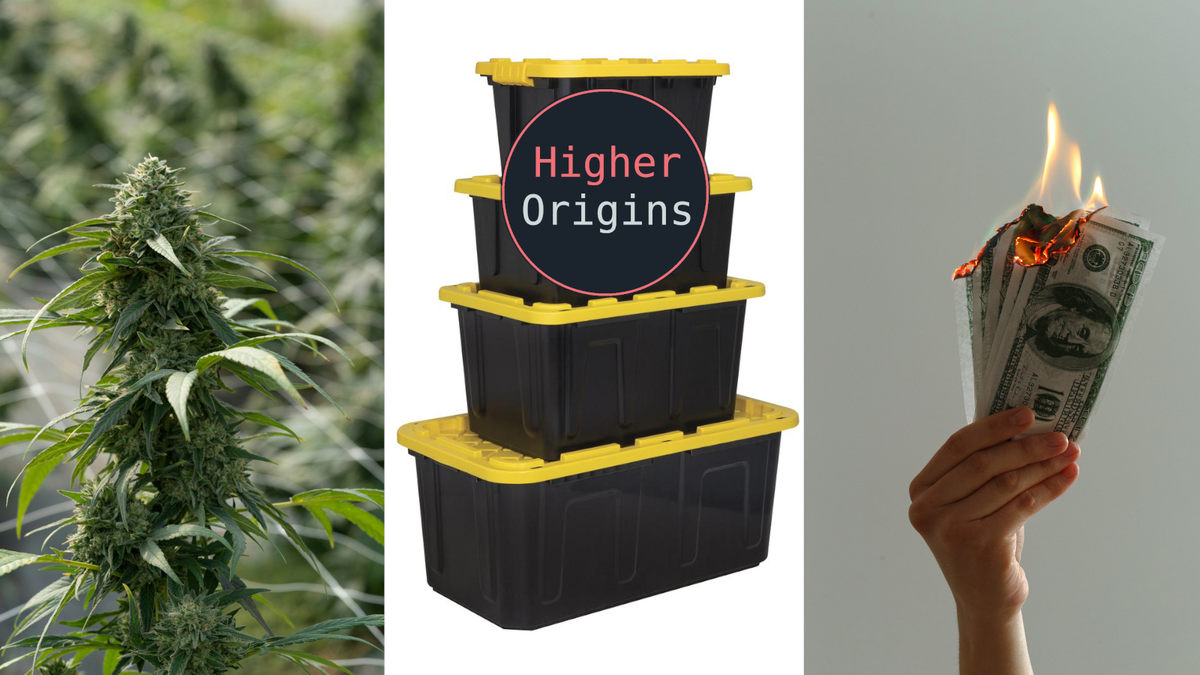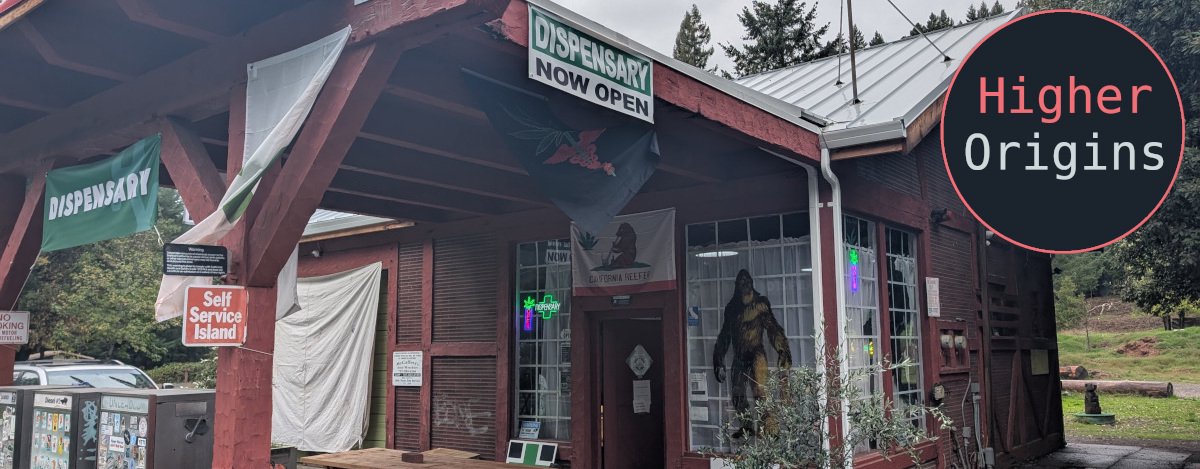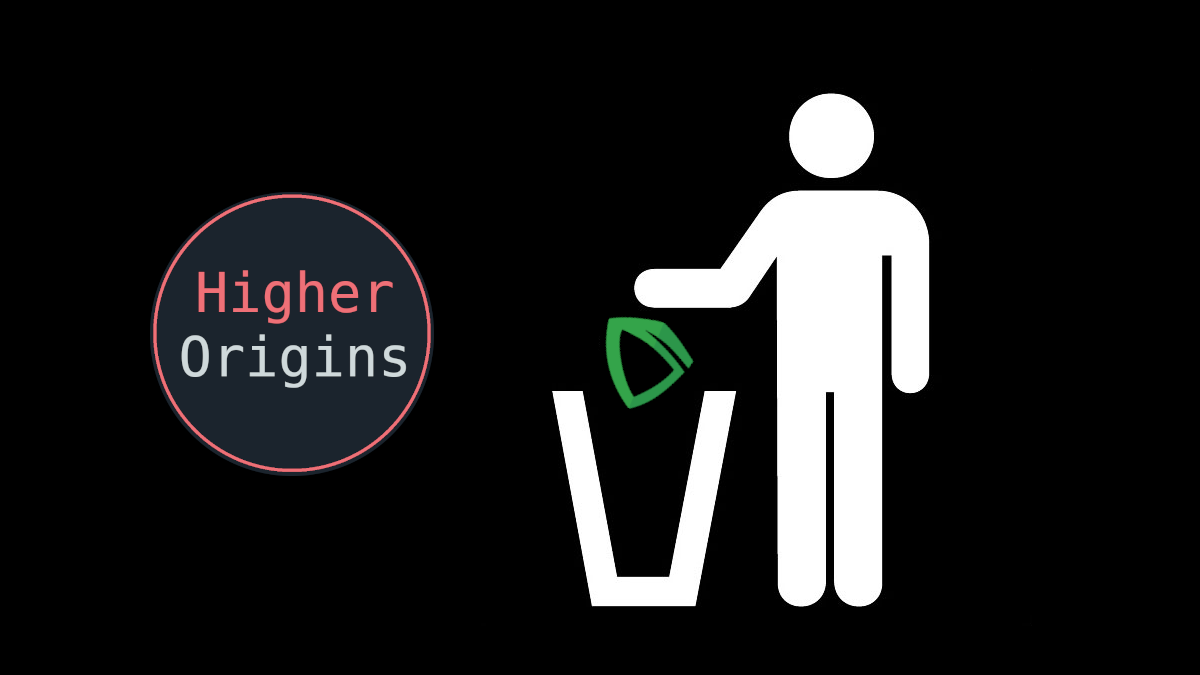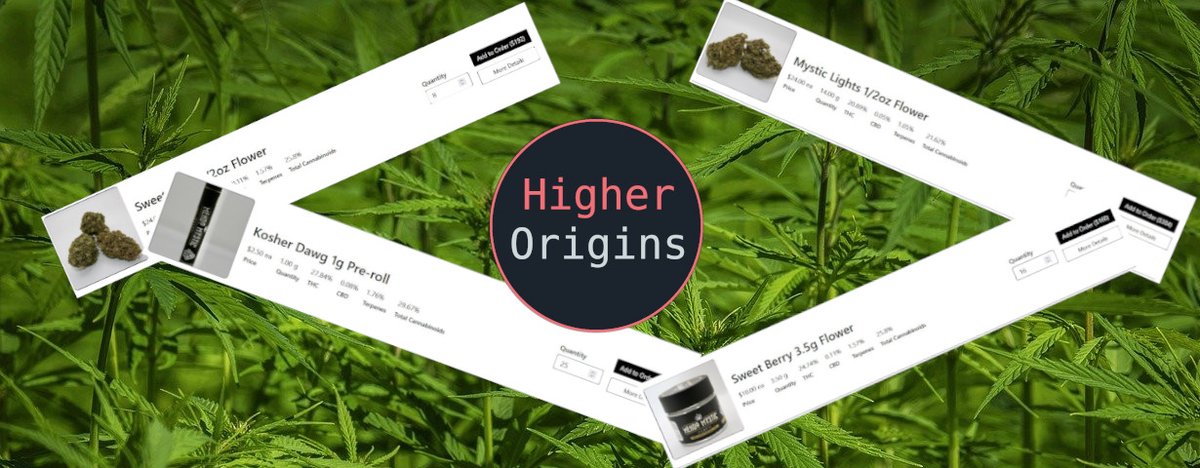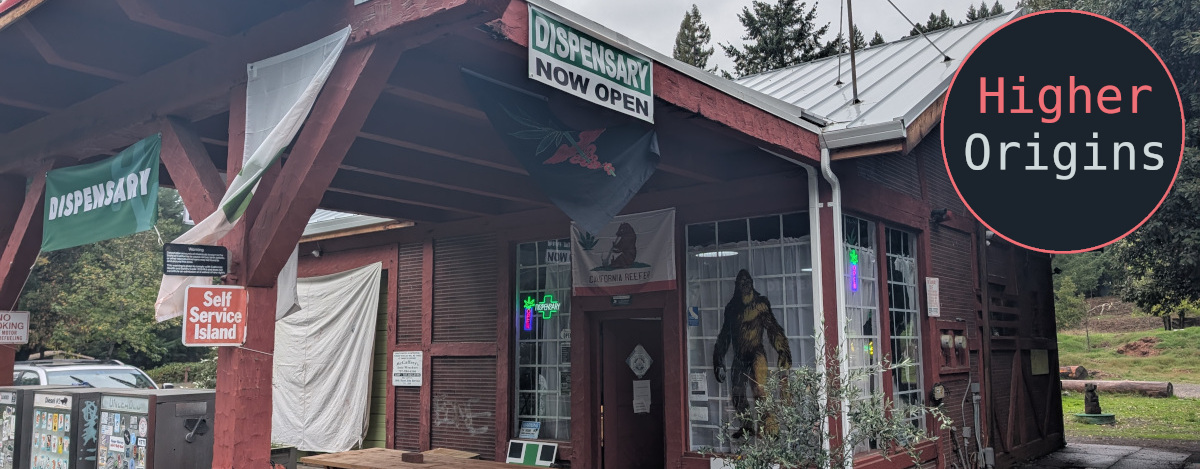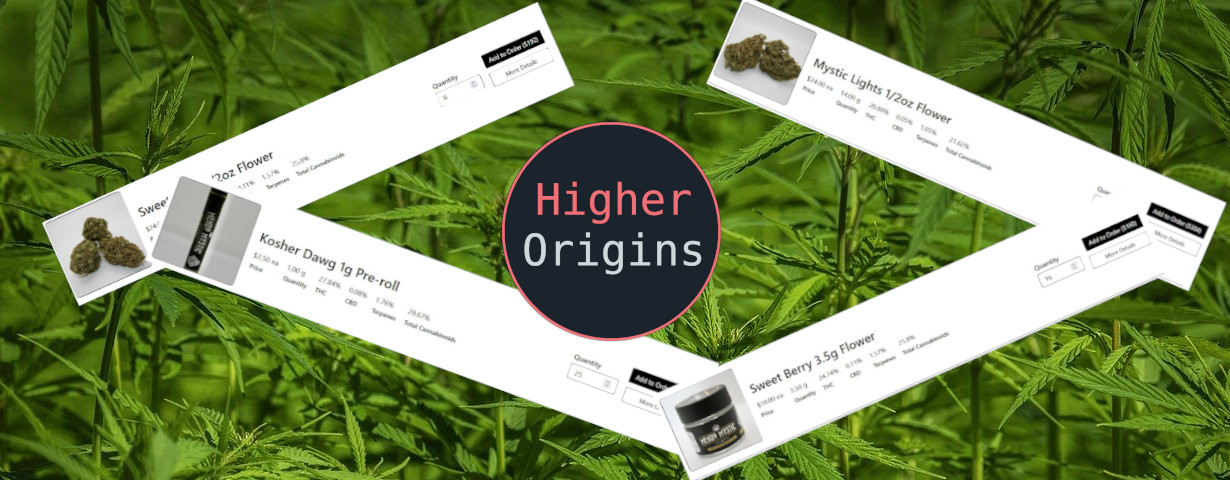Last week we released Ideal Cannabis Economics Part 1: Cultivation and Genetics, a look at what we think to be the best theoretical model to stabilize the California industry for small farms. Today, we take a step down the supply chain and look at the Distribution and branding sector.
Background
Prior to legalization, distribution for small cannabis farms was decentralized and fragmented. Every farm had a different method they preferred: some wanted to sell all at once to the first buyer in town and walk with the cash, others wanted to feed a loose network of friends and connections with a steady stream of smaller shipments, and still others had preset arrangements with buyers they had worked with for years. However it was done, distribution was a thriving industry, with high enough profit margins that farms could get multiple thousands of dollars per pound, with plenty left over for distributors. There was a real risk of being robbed, and rip-offs happened often, sometimes violently. Middlemen would leverage this risk to justify their cut when moving product for farms- they ran a high risk, high reward logistics system, and the market cost of their risk was factored into the final sale price.
The Changes of Legalization
Prop 64 immediately shifted the power balance. With all previously disposable income now taken by taxes and fees, the cannabis industry immediately lost its stable pricing structure that benefitted small farms. The newly created Distributor positions became mandatory gatekeepers of the market, with little financial oversight. Middlemen became distributors and continued charging high fees, which now went to cover their State fees rather than their risk. Retailers were created, and expanded rapidly beyond their compassionate medical dispensary roots, likewise with little financial oversight. Small farms were left with no legal option other than to sell to distributors.
The Current Situation
Currently, distribution and brand infrastructure in California is a financial disaster for small farms. Distributors oftentimes take the form of brokers, buying at exploitatively low prices and then flipping pounds for profit. The lack of any kind of financial or State regulation of payments has led to distributors simply not paying farms or stringing them along with a series of small payments. Due to State rules, farms can’t get their product back from distros once it has been transferred and tested, giving distros the option to never return products they can’t or won’t sell.
Lack of enforcement on the part of the State has allowed for the proliferation of “Burner Distros”- licensed distributors who take in legal weed, then “fail” and offload their unpaid inventory onto the illegal market. Distributors are also known to inappropriately store products for extended periods in environments that make them degrade, so when a farm's weed finally gets to consumers, it has lost its character and quality.
On the branding side, the situation isn't much better. Packaging and manufacturing costs cut into already thin margins, and once a product is ready, it still needs to be marketed to retailers and consumers. This process involves constant issuing of samples, phone calls, in person visits, and thousands of miles of driving around the state- for retailers who may not even want to speak to a grower. For those growers who decide against self-branding and choose to be a white-label supplier for a larger brand, they are often giving up any individual recognition for their work, since many white label brands refuse to promote or identify their growers. This lack of recognition means that even a farm that supplies some of the most well-known products on the market may have absolutely no name recognition, and therefore no voice to speak with when they get ripped off or misrepresented by a brand.
This is not to say that all branding and distribution is broken, but a large chunk of mid-supply chain operators are some of the biggest contributors to the organizational disaster that small farms must navigate to stay alive. There are respectful and community minded distros, brands, and manufacturers out there doing good work, charging sustainable prices, and bringing small farms to market, but they are a significant minority in today’s market.
We believe that a combination of networking between farms, Cash-on-Delivery only, and a leaner more logistics-oriented approach to distribution, when all linked by software, could greatly stabilize the market for small farms and fair-minded distributors.
Higher Origins Distribution/Branding Model
Cash on Delivery
There’s really no alternative: in order to ensure payment in an environment of zero State enforcement, COD needs to be a hard line in the sand by ANYONE selling cannabis in California. Farms must require this from distros, and in turn, distros must require this from retailers. 30-day terms with a strong contract are acceptable for buyers with a great track record of COD, and who maintain financial transparency with their partners.
Logistic Webs
Small farms should coordinate to work with webs of trusted smaller and more local distributors. These local connections are often more trustworthy than large urban distros and have a greater stake in keeping their customers happy than a large faceless urban distro. Likewise, farms that hold their own distro licenses can also co-distribute their neighbors’ products.
Small Farm Ride Shares
Small farm orders may not always fill a Transit van and may not make enough margin to clear the cost of transport- distros still have to cover their costs of course. Distros should coordinate with local farms for “Ride-Share” deliveries to the city, where small orders from multiple different farms can be combined for a full load, and the farms can split the delivery costs. Naturally, this requires some tighter scheduling, so everyone’s transfer is ready to go on time.
Bulk Collective Ordering of Packaging
Farms who want to self-brand and package their own product should form buyers’ clubs to obtain bulk pricing for their packaging materials. One farm using 20,000 jars in a season may not get a great margin over their packaging costs, but ten farms using 200,000 jars a season at bulk discounted pricing can significantly expand their profit margins.
Transparent Pull-System
To help alleviate the issue of distros having a farm’s entire harvest in stock but with no one to buy it, distros should adopt a pull system to reduce their inventory and ensure sales. Instead of just indiscriminately buying bulk from farmers, distros should only buy when they have orders spoken for from retailers. This means that when a distro buys a farm’s weed, they already know which retailer it is going to.. Transparency here is key: farms should be able to see if a distro actually has the sales interest to move their product in a timely manner.
Software Platforms
A shared software platform can help link all these business practices together. Farms can coordinate packaging orders together online. Distros can coordinate with farms to ride-share their products. Distros and local farms can integrate their METRC data to process transfers more transparently. Distros can share their order data to farms to demonstrate that they have the demand to move their flower. Likewise, self-branded farms can use software to promote their products and sell them to distros through a marketplace.
How this works with the Cultivation/Genetics Model
This model for the Distro level of the ecosystem ties in to our previous model for farms and genetics. In the farms and genetics model, nurseries and farms collaborate through technology to develop a shared set of data on how to grow regional strains to their highest potential. This strain data allows farms to differentiate their brands from others from the consumer perspective and allows distros to more easily choose products that match their retail customer’s needs. Since farms are more connected through software, it is easier for them to collaborate and network with distros to find ones that are mutually trustworthy, as well as ride-share their product and buy packaging. Distros on the network could get reviews from farms, demonstrating their trustworthiness and building their reputation.
Outcome
Distributors would be able to establish good relationships with a network of small farms to ensure a stable supply chain of well-documented genetics. Small farms would be able to access more affordable distribution and packaging. Those distros that are willing and financially responsible enough to accept Cash On delivery terms would be able to shift more from a brokerage market niche into a lean logistics market niche, while those who are not would be unable to access product from networked small farms, reducing the overall quality and differentiation of their inventory. Listing, ordering, and transfers between businesses can be done through METRC-linked software, which can streamline operations and standardize reporting. Retailers will be able to get fresher products, faster, and know who grew it, so they can more easily promote it to their customers. Distros would hold less inventory, reducing their facility costs.
Obstacles and Risks
The biggest obstacle to this model’s success is the willingness of distributors to act like logistics services rather than brokers, despite it being in their best interests long term. The State mandate handed distros carte blanche to speculate on cannabis with other people’s weed, and there seems to be little enforcement of that. There are a percentage of distros who are willing to operate on a logistics model- we work with some of them, and they are great. Realistically however, the appeal of the logistics model over the broker model won’t have a strong pull unless brokers start to risk losing access to small farms products- which account for over 50% of the products on the market today.
Another risk to consider for Distros is their lack of market stability. Their current position is tenuous and threatened. California has already reduced the justification for their license by moving the tax burden onto retailers, so they are already less useful in the eyes of regulators. Nonpayment is becoming such a huge issue that it’s not unreasonable to think that the State may crack down on this, gutting the transfer-now-pay-never model holding up a portion of the industry. Finally, if some form of Federal law change takes place, distros may find themselves competing with existing CPG distributors- the FedEx’s, DHL’s, and UPS’s of the world, and there’s no chance that most distros will be able to compete with them. Logistics is largely a solved problem outside the cannabis bubble, and when that bubble pops the only stable distributors will be those who have solid relationships with a diverse group of financially stable retailers and smaller farms with quality products.
Conclusion
This is the second of three articles in which we propose alternative small farm centered economic models for California cannabis. The final article will come out next week and cover the retail/consumer side of the industry, so keep an eye out for that! If you’re curious what Higher Origins is about, check out our Mission Statement. If you’re a California licensed cannabis business looking to buy from small farms, join our distribution network, or get your cannabis to market, consider joining. If you’re not licensed or just want to be a cool person and help us out, consider becoming a supporter here- your help goes a long way towards helping our community!
COD or bust!
-The Higher Origins Team
